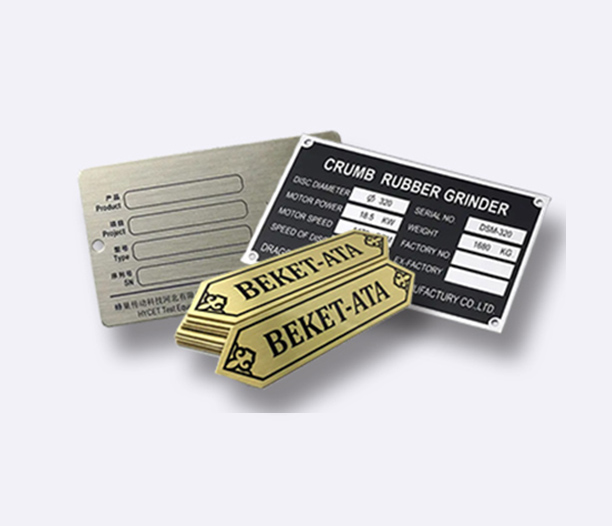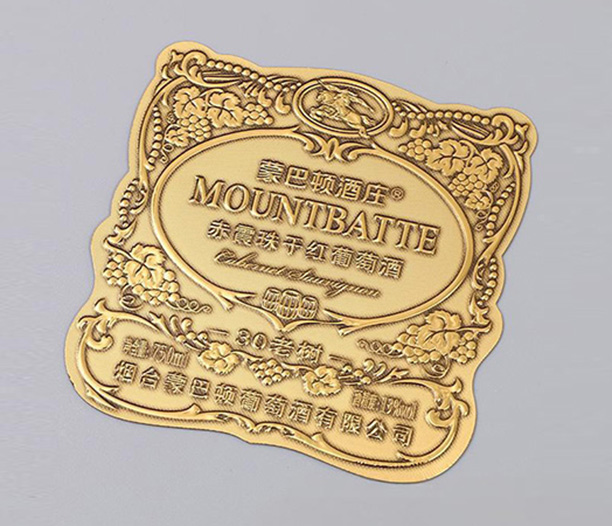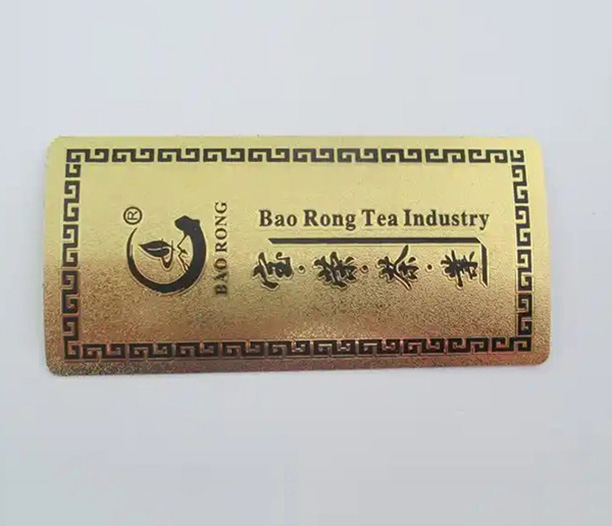In the world of permanent identification, asset tracking, branding, and safety compliance, few solutions offer the durability, versatility, and professional finish of blank metal tags for laser engraving. These unmarked substrates serve as the essential canvas for creating high-contrast, long-lasting markings that withstand harsh environments. Whether you're an industrial manufacturer, a small business owner, a safety officer, or a hobbyist, understanding the capabilities and applications of these tags is crucial. This comprehensive guide delves deep into the world of blank metal tags for laser engraving, exploring their materials, advantages, applications, the engraving process itself, and key selection criteria.
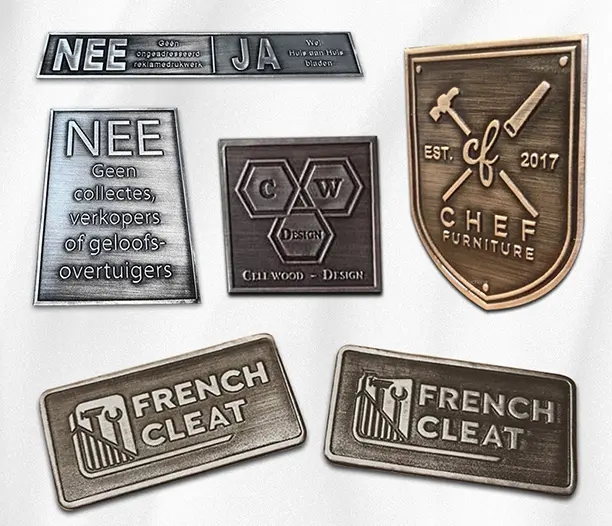
What are Blank Metal Tags for Laser Engving?
Blank metal tags for laser engraving are precisely cut, unmarked plates or labels made from various metals specifically chosen for their compatibility with laser marking systems. They arrive ready for customization, providing a clean, durable surface that interacts with laser energy to create permanent, high-contrast markings. Unlike pre-printed labels or tags, blank metal tags offer unparalleled flexibility, allowing for unique serial numbers, barcodes, logos, safety warnings, or any other information required, directly applied on-demand. They form the fundamental building block for creating robust identification solutions across countless industries.
1. Diverse Materials: Choosing the Right Blank Metal Tag
The performance and appearance of your final engraved tag heavily depend on the base material. Blank metal tags for laser engraving come in a wide array of options, each with distinct properties:
Anodized Aluminum: The most popular choice. A thin, hard aluminum oxide layer (anodize) is applied electrolytically. Lasers remove this colored layer (commonly black, red, blue, gold), exposing the bright silver aluminum underneath, creating excellent contrast. Highly corrosion-resistant, lightweight, cost-effective, and ideal for indoor/outdoor use (e.g., nameplates, equipment ID, barcodes). Specific alloys like 6061 are common.
Stainless Steel: Renowned for extreme durability and corrosion resistance. Laser engraving typically creates a dark mark (often black or dark grey) on the natural silver surface through annealing (heat-induced oxidation) or, less commonly for deep marks, ablation (material removal). Grades like 304 and 316 are prevalent. Perfect for harsh environments (chemical plants, marine, food processing, medical), safety labels, and applications requiring high strength and tamper resistance.
Brass: Offers a classic, warm gold appearance. Laser engraving creates a high-contrast mark, often dark brown or black, against the polished or satin brass background. While less corrosion-resistant than stainless steel in some environments, it provides excellent conductivity and an aesthetically pleasing, professional look for name badges, plaques, decorative items, and electrical panels. Often lacquered post-engraving for enhanced protection.
Copper: Similar to brass in warm color but reddish-brown. Lasers produce a dark mark, sometimes requiring specific settings for optimal contrast. Known for excellent electrical and thermal conductivity. Used for electrical components, artistic engravings, and decorative applications. Prone to tarnishing, often requiring protective coating.
Treated Steels (e.g., Aluminized Steel, Galvanized Steel): These blank metal tags have surface coatings (aluminum or zinc) for enhanced corrosion resistance at a lower cost than stainless steel. Laser engraving removes the coating, revealing the underlying steel, creating contrast. Common for automotive VIN plates, outdoor asset tags, and applications needing moderate durability on a budget.
Specialty Alloys (e.g., Inconel, Titanium): Used in extreme environments (aerospace, high-temperature applications, chemical resistance). Laser engraving is effective but requires precise settings due to their unique properties. These blank metal tags are typically more expensive.
2. Key Applications and Industries Served
The versatility of blank metal tags for laser engraving makes them indispensable across a vast spectrum of sectors:
Industrial Manufacturing & Machinery: Permanent equipment ID plates (model/serial numbers), asset tracking tags (barcodes/QR codes), maintenance schedules, control panel labels, warning signs, component identification. Blank metal tags ensure traceability and safety throughout a machine's lifecycle.
Electrical & Electronics: Panel labels, circuit breaker IDs, terminal blocks, component ratings, UL/CE certification labels. The non-conductive nature of anodized aluminum (when engraved) or the conductivity of brass/copper makes them ideal.
Automotive & Aerospace: VIN plates, engine/part identification, FAA compliance tags, maintenance records, fire safety labels. Demands high durability and resistance to fuels, oils, and extreme temperatures.
Medical & Laboratory Equipment: Device identification, calibration dates, serial numbers, instrument tracking, biohazard warnings, autoclave labels. Requires excellent chemical resistance and cleanability (stainless steel is dominant).
Safety & Compliance: OSHA/ANSI safety signs (hazard warnings, lockout/tagout tags), pipe markers, valve identification, emergency information. Blank metal tags provide the permanence required by regulations.
IT & Data Centers: Server/rack identification, network port labels, asset tracking for routers/switches. Anodized aluminum is popular here.
Retail & Branding: High-end product identification tags, serialized luxury goods, brand logos on equipment, promotional plaques. Brass and anodized aluminum offer aesthetic appeal.
Agriculture & Construction: Equipment identification, maintenance tags, safety decals replacement on heavy machinery exposed to weather and abrasion.
Military & Government: Secure asset tracking, tamper-evident seals, equipment identification requiring high durability and permanence.
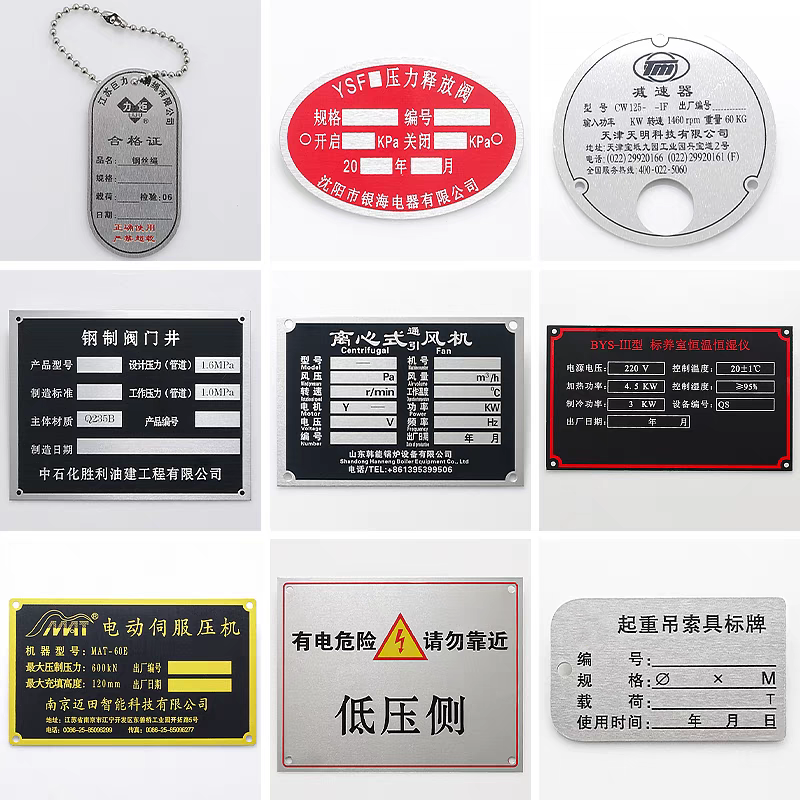
3. The Laser Engraving Process: How It Works on Blank Metal Tags
Laser engraving offers a non-contact, precise, and permanent marking method perfectly suited for blank metal tags. The process varies slightly depending on the metal and desired effect:
Design Creation: The desired text, logo, barcode, or graphic is created in vector-based design software (e.g., CorelDraw, Adobe Illustrator).
Laser Setup: The correct blank metal tag material is selected. The laser operator configures the machine settings (power, speed, frequency/pulse duration, focus) based on the material type, thickness, and desired mark depth/contrast. This is crucial for optimal results.
Positioning: The blank metal tag is secured flat on the laser bed or within a jig for consistent placement.
Engraving: The focused laser beam interacts with the tag's surface:
Anodized Aluminum: The laser vaporizes the colored anodized layer, exposing the bright metal underneath (high contrast).
Stainless Steel/Brass/Copper: Primarily uses annealing marking. The laser heats the surface locally, causing controlled oxidation that forms a dark oxide layer (often black or dark grey) contrasting with the base metal. Ablation (material removal) can be used for deeper engravings.
Treated Steels: The laser typically ablates (vaporizes) the top coating (aluminum or zinc), revealing the contrasting steel substrate underneath.
Result: A permanent, high-contrast mark is created directly into the surface of the blank metal tag. No inks or dyes are involved, making the mark highly resistant to fading, chemicals, abrasion, and weathering.
4. Advantages Over Alternative Tagging Methods
Choosing blank metal tags for laser engraving offers significant benefits compared to other identification methods:
Unmatched Durability & Permanence: Laser marks are integral to the metal surface, resisting fading, smudging, chemicals, solvents, extreme temperatures, UV exposure, and abrasion far better than printed labels, ink stamps, or even some mechanical engraving.
High Precision & Detail: Lasers can reproduce incredibly fine details, small fonts (down to point sizes difficult to read with the naked eye), complex logos, and high-resolution barcodes/QR codes with extreme accuracy, ensuring scannability and readability.
Speed & Efficiency: Once set up, laser engraving is fast and automated, ideal for batch production of serialized tags or large quantities. Changes to the design are digital and instant.
Versatility & Customization: A single set of blank metal tags can be instantly customized for any application. Unique serial numbers, variable data, and bespoke designs are created on the fly without needing pre-printed stock.
Clean & Professional Finish: Laser engraving produces a crisp, high-contrast mark with a professional appearance, enhancing brand image and perceived quality.
Non-Contact Process: The laser doesn't physically touch the tag, eliminating mechanical stress or distortion, which is crucial for thin tags or delicate components.
Resistance to Harsh Environments: The combination of robust metal substrates and permanent laser marks makes these tags suitable for demanding industrial, outdoor, and corrosive settings where labels would fail.
Tamper Resistance: Laser marks are extremely difficult to alter or remove without obvious damage, providing security for critical identification and compliance tags.
5. Key Considerations When Selecting Blank Metal Tags for Laser Engraving
Choosing the right blank metal tags is critical for project success. Consider these factors:
Material: Match the material to your environment (corrosion resistance needs), required contrast, aesthetic preference, budget, and any functional requirements (e.g., conductivity, non-conductivity, magnetism). (See Section 1).
Thickness (Gauge): Determines rigidity and durability. Thinner tags (e.g., 0.020" / 0.5mm) are flexible and economical for flat surfaces. Thicker tags (e.g., 0.040" / 1mm or more) offer greater rigidity and impact resistance for machinery or outdoor use. Consider mounting method (adhesive vs. rivets/holes).
Size & Shape: Standard rectangles and circles are readily available. Custom shapes (ovals, rounded corners, unique profiles) are often possible but may incur tooling costs or minimum order quantities. Ensure the size accommodates the necessary information clearly.
Surface Finish: Options include mill (natural), polished, brushed (satin), or specific anodized colors. The finish impacts aesthetics and sometimes contrast. Brushed finishes can help hide minor handling scratches.
Holes & Mounting Options: Pre-punched holes (size, quantity, location) for rivets, screws, or zip ties are common. Alternatively, tags can be supplied blank for adhesive mounting (requires selecting the right high-performance adhesive backing - e.g., permanent acrylic foam, VHB).
Quantity & Supplier Capabilities: Balance cost per unit with minimum order quantities. Partner with a supplier experienced in providing high-quality blank metal tags for laser engraving who can offer material advice, custom fabrication, and potentially in-house engraving services.
Laser Compatibility: While most metals mentioned are laser-engravable, confirm compatibility with your specific laser type (Fiber laser is generally best for metals, CO2 can work on treated surfaces/anodize). Suppliers can often provide engraving parameters.
Sourcing and Customization Options
Blank metal tags for laser engraving are readily available from numerous suppliers:
Industrial Suppliers & Tag Manufacturers: Often specialize in standard and custom metal tags, offering a wide range of materials, sizes, and finishes. They may provide value-added services like custom cutting, hole punching, and even laser engraving.
Online Retailers: Offer convenient ordering of standard sizes and materials, often with quick turnaround, but may have less flexibility for complex customizations.
Direct from Laser Engraving Service Bureaus: Many engraving shops also supply blank metal tags, ensuring perfect compatibility with their equipment and expertise.
Customization options are extensive:
Material Choice: As discussed.
Precision Cutting: Custom shapes beyond standard rectangles/circles.
Hole Punching: Specific hole sizes, quantities, and locations.
Edge Finishing: Deburring, radiusing (rounding) sharp edges for safety and aesthetics.
Surface Finishes: Specific polishing, brushing, or anodized colors.
Adhesive Backing: Selection of permanent, removable, or high-temperature adhesives.
Blank metal tags for laser engraving represent the gold standard for creating durable, professional, and versatile identification solutions. Their ability to withstand the toughest environments while maintaining clear, permanent markings makes them indispensable across countless industries, from heavy manufacturing and critical safety applications to branding and asset management. By understanding the diverse material options (anodized aluminum, stainless steel, brass, etc.), their vast applications, the precision laser engraving process, and their significant advantages over alternatives, you can confidently select the perfect blank metal tags for your specific needs. Whether sourcing standard sizes or opting for fully customized solutions, these tags provide a reliable foundation for communication, traceability, safety, and brand representation that endures. Investing in quality blank metal tags for laser engraving is an investment in long-term clarity, compliance, and operational efficiency.



